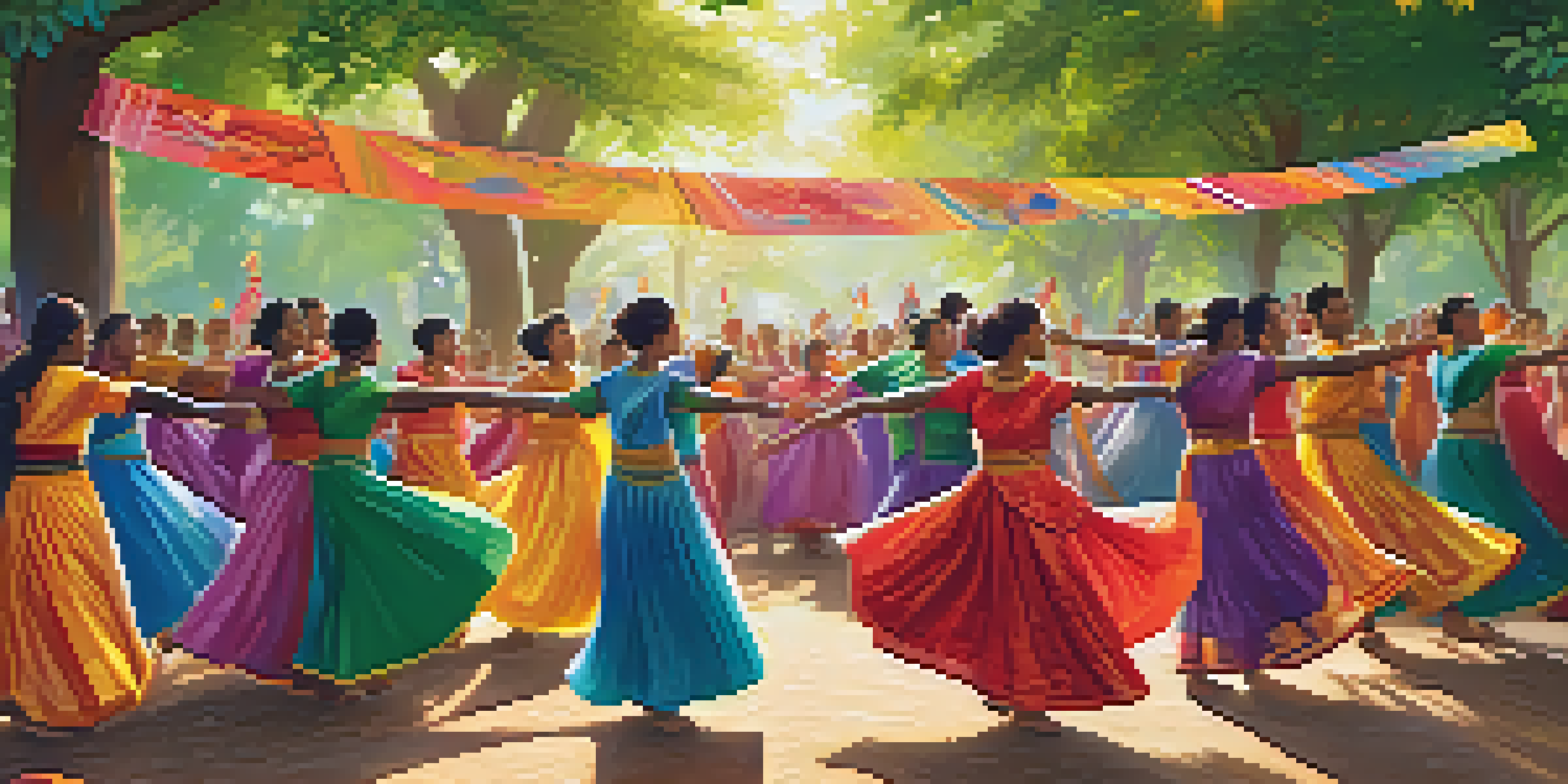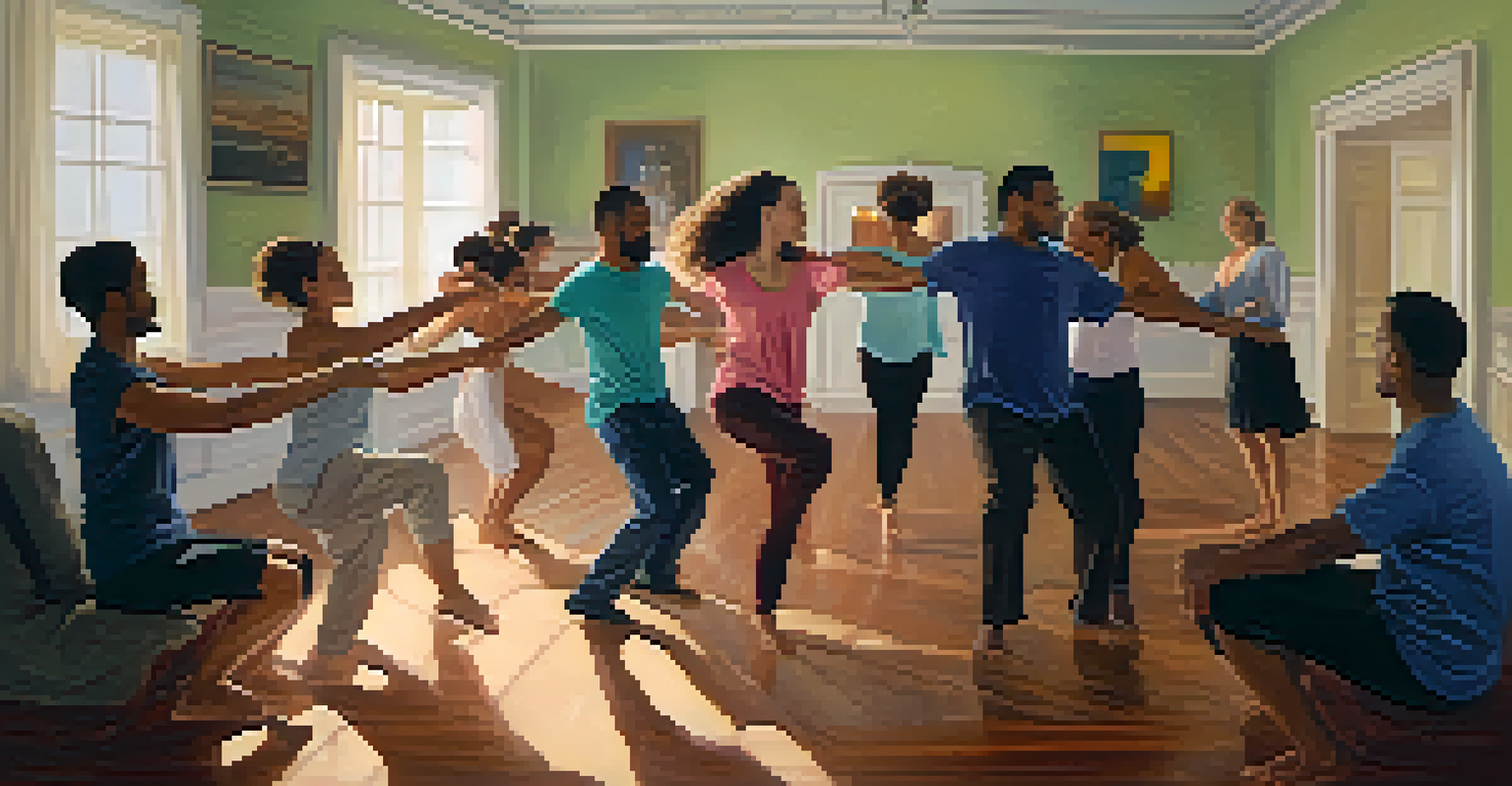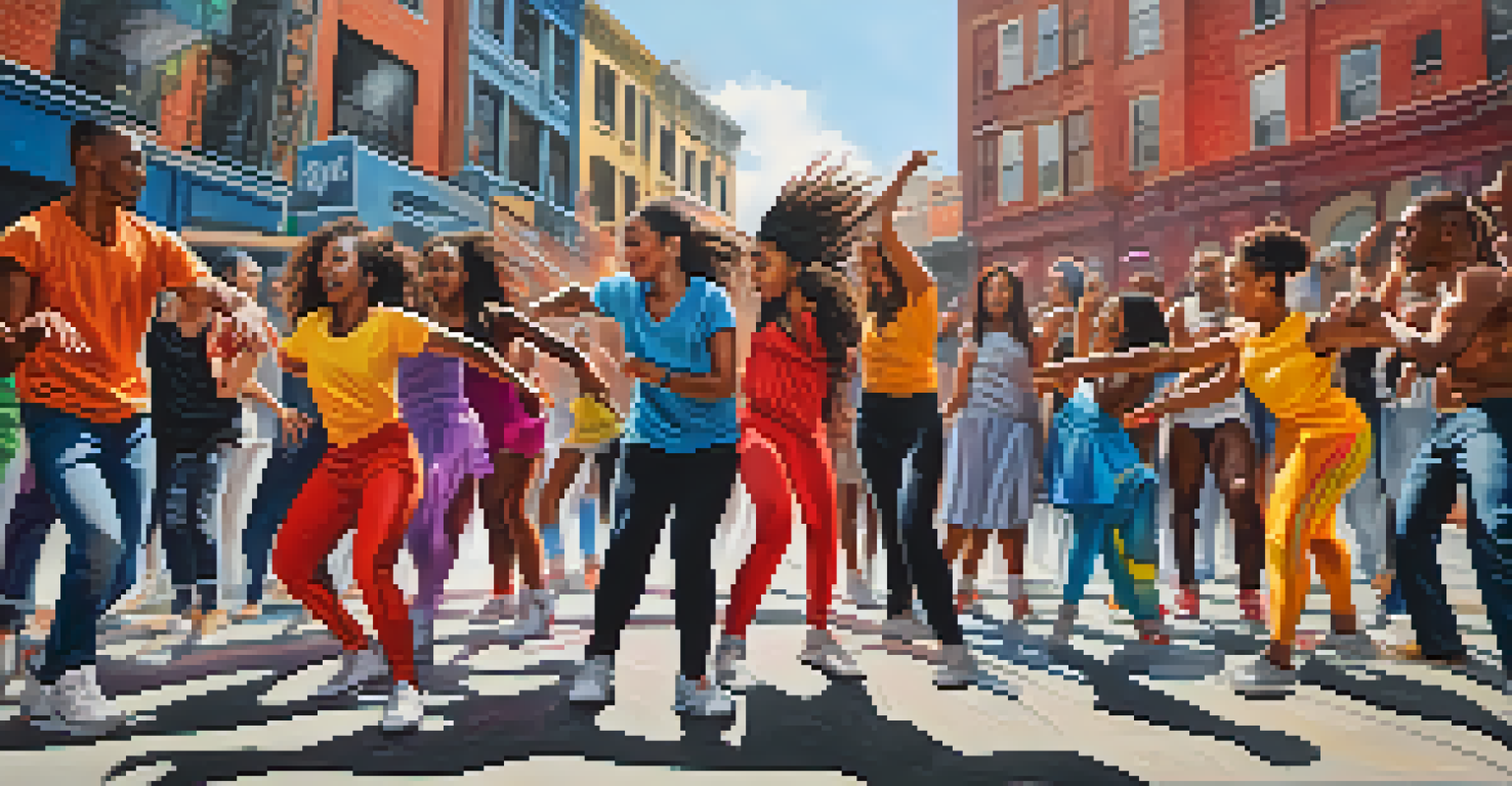Dance as a Tool for Community Healing and Social Change

Understanding Dance as a Form of Expression and Connection
Dance transcends language, allowing individuals to express emotions and experiences that words often fail to capture. It's a universal form of expression, creating a space where people can connect on a deeper level. Whether through traditional folk dances or contemporary styles, movement becomes a shared language that fosters understanding and empathy.
Dance is the hidden language of the soul.
In many cultures, dance is woven into the fabric of community life, serving as a ritual for celebration and mourning alike. This connection helps individuals feel less isolated in their experiences, promoting a sense of belonging. When the community comes together to dance, it creates bonds that can be instrumental in healing processes.
Moreover, dance can be a powerful tool for storytelling, enabling communities to share their histories and struggles. Through movement, dancers can convey narratives that resonate deeply with others, fostering solidarity and a collective identity. This storytelling aspect of dance can spark conversations about social issues and inspire change.
The Healing Power of Dance in Community Settings
Dance has long been recognized for its therapeutic benefits, helping individuals process trauma and grief. Community dance programs often provide a safe space where participants can confront their emotions through movement. This shared experience of emotional release can be incredibly cathartic, promoting healing on both personal and collective levels.

For instance, in post-conflict regions, dance therapy has been utilized to help individuals and communities rebuild after trauma. Workshops and performances allow participants to express their pain and hope, fostering resilience. As they move together, they create a sense of unity that can help mend the wounds inflicted by conflict.
Dance as Healing and Connection
Dance provides a therapeutic outlet for individuals and communities to process emotions, fostering healing and unity.
Additionally, dance can enhance physical and mental well-being, reducing stress and anxiety. The act of dancing releases endorphins, lifting spirits and fostering a positive environment. This holistic approach to healing highlights how dance can be an essential part of community health initiatives.
Dance as a Medium for Social Justice and Change
Dance has historically been a powerful vehicle for social change, often used to challenge injustices and raise awareness. Artists and activists employ dance to address issues like racism, inequality, and human rights. By using their bodies to convey messages, they can reach audiences in a visceral way that traditional activism sometimes cannot.
Dancing is like dreaming with your feet!
For example, the Black Lives Matter movement has seen dancers take to the streets, using choreography to express their demands for justice and equality. These performances draw attention to crucial social issues while bringing communities together in solidarity. The visual impact of dance can leave a lasting impression that resonates with viewers long after the performance ends.
In addition, dance can empower marginalized voices, providing a platform for stories that might otherwise go unheard. Through community dance projects, individuals can reclaim their narratives and assert their identities, fostering a sense of pride and agency. This empowerment is critical for driving social change and challenging systemic injustices.
Community Dance Initiatives: Success Stories
Around the world, numerous community dance initiatives have successfully fostered healing and change. Programs like 'Dancing with the Stars' in South Africa encourage social cohesion through dance workshops and performances. Participants not only learn new skills but also build friendships that transcend cultural and social barriers.
Another inspiring example is the 'Dancing for Peace' program, which brings together youth from conflicting backgrounds. Through collaborative dance projects, these young people learn to communicate and collaborate, breaking down prejudices and fostering understanding. The transformations seen in participants often extend beyond the dance floor into their everyday lives.
Dance Drives Social Change
Through powerful performances, dance challenges injustices and amplifies marginalized voices, creating a platform for social activism.
These success stories demonstrate the potential of dance to create positive social impacts. By focusing on inclusivity and community involvement, these initiatives can serve as blueprints for others looking to harness the power of dance for healing and change.
Bridging Differences Through Dance
Dance serves as an effective means of bridging cultural and social differences, bringing together diverse groups to celebrate shared humanity. In multicultural communities, dance festivals often highlight various cultural traditions, fostering appreciation and respect for one another. This exchange can break down stereotypes and promote unity.
For instance, community dance events that feature various cultural styles encourage participants from different backgrounds to engage with each other. When people dance side by side, they share not just their movements but also their stories and experiences. This kind of interaction can lead to lasting friendships and collaborations that strengthen community ties.
Additionally, dance can challenge cultural norms and expectations, inviting dialogue about inclusivity and representation. By showcasing a variety of dance styles and voices, communities can explore how movement reflects their diverse identities. This exploration can be a powerful catalyst for broader social change as it invites deeper conversations about equity and representation.
The Role of Technology in Modern Dance Activism
In today's digital age, technology plays a significant role in amplifying dance as a tool for social change. Social media platforms allow dancers and activists to share their messages widely, reaching audiences across the globe. Viral dance challenges often draw attention to social issues, creating a sense of urgency and community engagement.
For example, the #DanceForChange movement utilized TikTok to encourage users to create and share dances that raise awareness for various causes. This innovative approach not only engages younger audiences but also fosters a sense of collective action. When people see others participating, it can inspire them to join the movement and make their voices heard.
Sustainability in Community Dance
Ensuring the longevity of community dance initiatives is essential for maintaining their impact on healing and social change.
Moreover, online workshops and virtual performances have expanded access to dance, allowing participants from different backgrounds to connect and collaborate. This democratization of dance can help foster inclusivity and provide a platform for underrepresented voices. As technology continues to evolve, its integration into dance activism will likely enhance community engagement and social impact.
Future Directions: Sustainability in Dance for Change
As we look to the future, the sustainability of community dance initiatives is crucial for their long-term impact. Developing strong partnerships with local organizations, schools, and businesses can help ensure that these programs receive the support they need to thrive. By working together, communities can create lasting frameworks for healing through dance.
Additionally, seeking funding and resources can help expand the reach of dance initiatives. Grants, sponsorships, and community fundraising can provide the necessary financial backing to sustain programs over time. This financial support allows for more extensive workshops, performances, and outreach efforts, making dance accessible to all.

Ultimately, the goal is to create a culture of dance that celebrates diversity and fosters healing and social change. By prioritizing sustainability, communities can ensure that the transformative power of dance continues to be a vital tool for connection and advocacy for years to come.